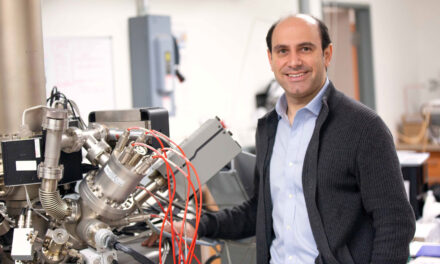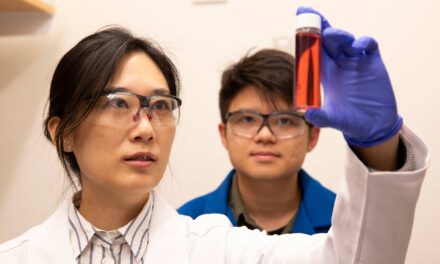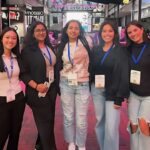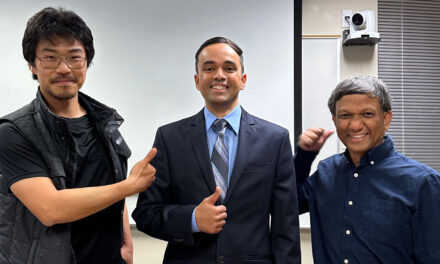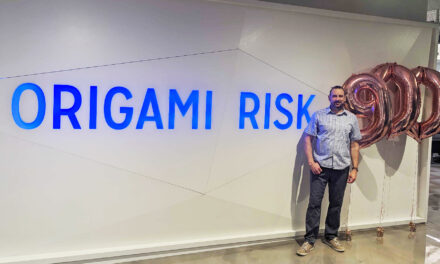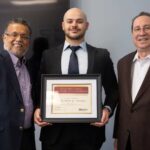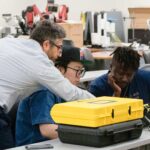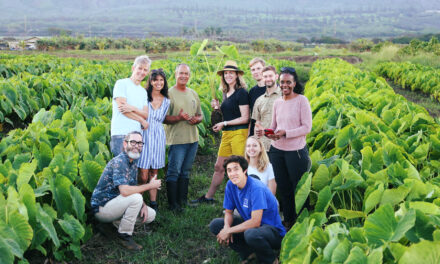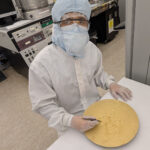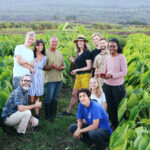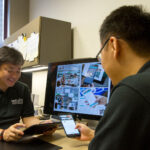
Tech venture’s setback reveals passion that drives innovation
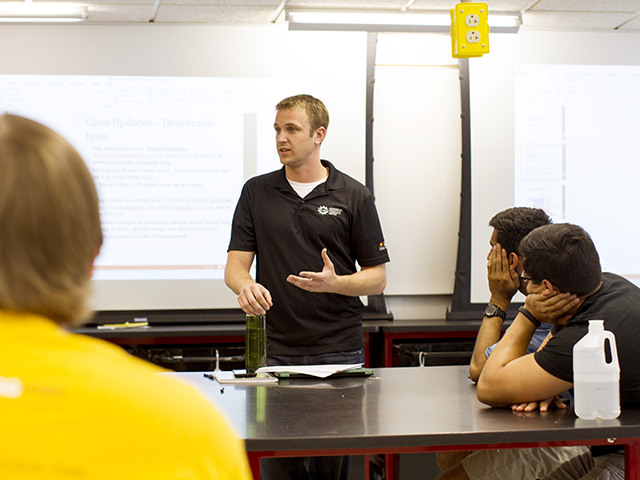
Scott Shrake’s recent experience in launching a startup business will provide lessons he can pass on to students he mentors in ASU’s Engineering Projects in Community Service (EPICS) program. Photography by Jessica Hochreiter/ASU
Legacy of startup’s co-founder inspires commitment to fulfill his vision
Scott Shrake prepares students in Arizona State University’s Engineering Projects in Community Service (EPICS) program for the challenges that often arise in launching entrepreneurial ventures.
His own recent experience in a business endeavor provides a compelling lesson in coping with unforeseeable setbacks.
Shrake and partners Chris Stiffler and Brian Straub were making unusually rapid progress establishing a startup company called Vicinity Health.
The company’s product is Wheezy, a compact health-monitoring device that plugs into a smartphone. It’s designed specifically for asthma sufferers.
Wheezy can detect the state of a user’s physical condition as well as environmental conditions in the user’s immediate vicinity. The device is programmed to focus on the specific physical and environmental factors that can be triggers for asthma attacks. The data Wheezy collects is delivered to a server where an algorithm is applied to develop a health profile of the user that will assess the person’s level of risk for having an asthma attack.
[vimeo]http://www.vimeo.com/98657102[/vimeo]
In only a few months, Shrake, Stiffler and Straub had signed on to work with a prominent business incubator and startup accelerator and were on their way to raising seed funding for advanced prototyping and testing of Wheezy.
Vicinity Health also was selected as one of the TiE50 finalists. TiE (The indus Entrepreneurs) is the Silicon Valley’s premiere annual awards program for new technology startups. Program judges choose what they consider to the most promising startups from among thousands of contenders worldwide. Getting named as one of the TiE50 puts fledgling businesses in a spotlight that can dramatically boost efforts to attract investors and support from a variety of sources.
The idea for Wheezy came from Stiffler several months ago after he suffered a severe asthma attack that put him in the hospital for four days.
A computer expert and all-around techie, Stiffler had his wife, Sandy, bring his laptop computer to the hospital, where he began working on concepts for the hardware and software for Wheezy while recovering in the intensive care unit.
Later, his search for those with the expertise to help him move beyond the idea stage led him to Shrake, a lecturer in ASU’s Ira A. Fulton Schools of Engineering and director of EPICS, and Straub, a pharmacist.
Unfortunately, their momentum was recently halted in tragic fashion. In early June, Stiffler, who had suffered from asthma for most of his 35 years, had another severe attack, one from which he did not recover.
Besides his wife, Stiffler leaves behind a 5-year-old daughter and a 3-year-old son. The boy has been experiencing symptoms of asthma.
His sudden passing has suspended the Vicinity Health project, but by no means ended it. Shrake said of Stiffler, “Chris was definitely a genius. This device was his vision and his dream. He really wanted to make a difference in the world. We are committed to forging ahead on this.”
The efforts to move the venture forward will also translate into something valuable for the students in the EPICS courses, Shrake said.
Doing the groundwork for Vicinity Health has expanded his firsthand experience in pitching business proposals, attracting investment, navigating through the process of developing new technology, and dealing with the regulatory requirements for bringing a new product to the market.
“Going through all of that will give me a stronger basis for better mentoring students about the challenges they can face in taking on social entrepreneurship projects,” he said.
Almost 300 students will participate in EPICS beginning in the fall semester – up from 40 a year and a half ago. They are expected to launch or continue 50 to 60 projects, using their engineering skills to aid community groups, nonprofit organizations and municipalities in devising and implementing solutions for meeting societal needs.
At the same time, support for EPICS from businesses and philanthropic groups is increasing, as well as the number of ASU faculty members guiding students on their projects. In addition, the EPICS high school outreach program is set to expand from four to 10 partner schools in the next year.
Chris Stiffler’s legacy will be reflected in the progress of EPICS students, Shrake said.
“His story is a lesson about why entrepreneurship is important, and that it is done best by people pursuing the kinds of solutions that raise the quality of their lives and the lives of the people around them,” he said. “Innovation starts with a problem and the passion to put everything you can into solving that problem. That’s what Chris was doing.”
Learn more about EPICS at ASU.
Read more about Chris Stiffler at a crowd-sourcing memorial website.
Media Contact
Joe Kullman, [email protected]
(480) 965-8122
Ira A. Fulton Schools of Engineering


